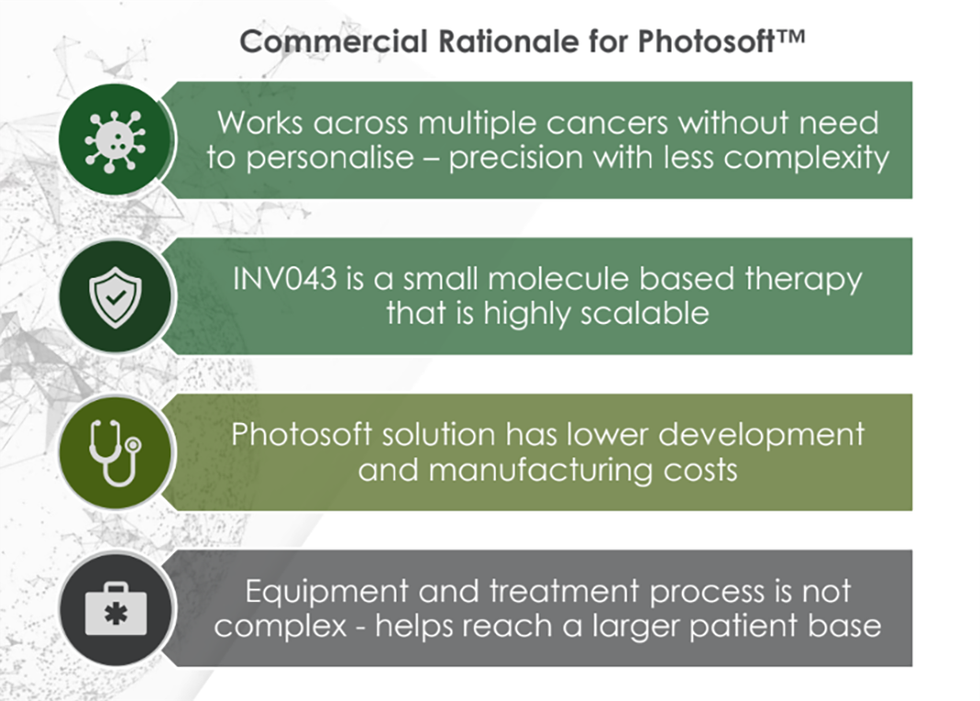If approved, XALKORI would be the first biomarker-driven therapy for Pediatric ALK-positive Anaplastic Large Cell Lymphoma
Pfizer Inc. (NYSE:PFE) today announced that the U.S. Food and Drug Administration (FDA) has accepted and granted priority review to the Company's supplemental New Drug Application(sNDA)for XALKORI® (crizotinib) for the treatment of pediatric patients with relapsed or refractory systemic anaplastic large cell lymphoma (ALCL) that is anaplastic lymphoma kinase (ALK)-positive. XALKORI received Breakthrough Therapy designation (BTD) for the ALK-positive ALCL indication in May 2018 and if approved, would be the first biomarker-driven therapy for this type of pediatric lymphoma. The Prescription Drug User Fee Act (PDUFA) goal date for a decision by the FDA is January 2020.
"Despite high survival rates for children with ALK-positive anaplastic large cell lymphoma, many will relapse, requiring novel treatment approaches," said Chris Boshoff, M.D., Ph.D., Chief Development Officer, Oncology, Pfizer Global Product Development. "Today's FDA filing exemplifies Pfizer's commitment to broadening the use of biomarker-driven therapies in areas with significant needs, such as rare, pediatric cancers. Given XALKORI's proven efficacy in ALK-positive lung cancer and activity seen in clinical trials investigating relapsed or refractory ALK- and ROS-1 positive anaplastic large cell lymphoma, if approved, XALKORI could represent an important step toward improving outcomes for children with this type of cancer."
Anaplastic large cell lymphoma is a rare type of non-Hodgkin lymphoma (NHL), divided into ALK-positive or ALK-negative disease. 1,2 Though the five-year survival rate for children with cancer in the U.S. is now the highest it's ever been at 80%, children with cancer continue to face challenges in treating their disease, including rare tumor types, variations in medicine response and prolonged risk of side effects. 3
"Children with cancer and their families have been desperate for new and innovative medicines. We applaud Pfizer's commitment to drug discovery and development to help address childhood cancers, and continue to work together on behalf of patients with these cancers," said George Dahlman, Chief Executive Officer, Children's Cancer Cause. "We look forward to potentially having a new biomarker-driven therapy for children with relapsed or refractory ALK-positive ALCL that may help improve these children's lives."
The FDA submission is supported by the results from Study ADVL0912 (NCT00939770) and Study A8081013 (NCT01121588). Study ADVL0912 is a Phase 1/2 study conducted in collaboration with the Children's Oncology Group (COG), evaluating the maximum dose that is safe and tolerable, and assessing clinical activity in pediatric patients with relapsed or refractory solid tumors and ALCL. Pfizer provided funding and support to COG for this trial. Study A8081013 evaluated XALKORI in pediatric and adult patients with advanced malignancies known to be ALK-positive other than non-small cell lung cancer (NSCLC) and included patients with relapsed or refractory ALCL. These two studies showed compelling antitumor activity in pediatric and adult patients who received XALKORI. 4,5 Please visit clinicaltrials.gov for more information on these studies.
This FDA submission is in addition to the European Medicines Agency's agreement on a Pediatric Investigational Plan (PIP) for XALKORI including the treatment of pediatric patients with relapsed or refractory systemic ALK-positive ALCL. This decision represents a step forward for potential regulatory submission for XALKORI in pediatric patients with relapsed or refractory ALK-positive ALCL in the European Union.
About XALKORI ® (crizotinib)
XALKORI is a tyrosine kinase inhibitor (TKI) indicated for the treatment of patients with metastatic NSCLC whose tumors are ALK-positive or ROS1-positive as detected by an FDA-approved test. XALKORI has received approval for patients with ALK-positive NSCLC in more than 90 countries worldwide including Australia, Canada, China, Japan, South Korea and the European Union. XALKORI is also approved for ROS1-positive NSCLC in more than 70 countries.
The full prescribing information for XALKORI can be found here .
IMPORTANT XALKORI ® (crizotinib) SAFETY INFORMATION FROM THE U.S. PRESCRIBING INFORMATION
Hepatotoxicity: Drug-induced hepatotoxicity with fatal outcome occurred in 0.1% of patients treated with XALKORI across clinical trials (n=1719). Increased transaminases generally occurred within the first 2 months. Monitor liver function tests, including ALT, AST, and total bilirubin, every 2 weeks during the first 2 months of treatment, then once a month, and as clinically indicated, with more frequent repeat testing for increased liver transaminases, alkaline phosphatase, or total bilirubin in patients who develop increased transaminases. Permanently discontinue for ALT/AST elevation >3 times ULN with concurrent total bilirubin elevation >1.5 times ULN (in the absence of cholestasis or hemolysis); otherwise, temporarily suspend and dose-reduce XALKORI as indicated.
Interstitial Lung Disease/Pneumonitis: Severe, life-threatening, or fatal interstitial lung disease (ILD)/pneumonitis can occur. Across clinical trials (n=1719), 2.9% of XALKORI-treated patients had any grade ILD, 1.0% had Grade 3/4, and 0.5% had fatal ILD. ILD generally occurred within 3 months after initiation of treatment. Monitor for pulmonary symptoms indicative of ILD/pneumonitis. Exclude other potential causes and permanently discontinue XALKORI in patients with drug-related ILD/pneumonitis.
QT Interval Prolongation: QTc prolongation can occur. Across clinical trials (n=1616), 2.1% of patients had QTcF (corrected QT by the Fridericia method) ≥500 ms and 5% of 1582 patients had an increase from baseline QTcF ≥60 ms by automated machine-read evaluation of ECGs. Avoid use in patients with congenital long QT syndrome. Monitor ECGs and electrolytes in patients with congestive heart failure, bradyarrhythmias, electrolyte abnormalities, or who are taking medications that prolong the QT interval. Permanently discontinue XALKORI in patients who develop QTc >500 ms or ≥60 ms change from baseline with Torsade de pointes, polymorphic ventricular tachycardia, or signs/symptoms of serious arrhythmia. Withhold XALKORI in patients who develop QTc >500 ms on at least 2 separate ECGs until recovery to a QTc ≤480 ms, then resume at next lower dosage.
Bradycardia: Symptomatic bradycardia can occur. Across clinical trials, bradycardia occurred in 13% of patients treated with XALKORI (n=1719). Avoid use in combination with other medications known to cause bradycardia. Monitor heart rate and blood pressure regularly. If bradycardia occurs, re-evaluate for the use of concomitant medications known to cause bradycardia. Permanently discontinue for life-threatening bradycardia due to XALKORI; however, if associated with concomitant medications known to cause bradycardia or hypotension, hold XALKORI until recovery to asymptomatic bradycardia or to a heart rate of ≥60 bpm. If concomitant medications can be adjusted or discontinued, restart XALKORI at 250 mg once daily with frequent monitoring.
Severe Visual Loss: Across clinical trials, the incidence of Grade 4 visual field defect with vision loss was 0.2% of 1719 patients. Discontinue XALKORI in patients with new onset of severe visual loss (best corrected vision less than 20/200 in one or both eyes). Perform an ophthalmological evaluation. There is insufficient information to characterize the risks of resumption of XALKORI in patients with a severe visual loss; a decision to resume should consider the potential benefits to the patient.
Vision Disorders: Most commonly visual impairment, photopsia, blurred vision or vitreous floaters, occurred in 63% of 1719 patients. The majority (95%) of these patients had Grade 1 visual adverse reactions. 0.8% of patients had Grade 3 and 0.2% had Grade 4 visual impairment. The majority of patients on the XALKORI arms in Studies 1 and 2 (>50%) reported visual disturbances which occurred at a frequency of 4-7 days each week, lasted up to 1 minute, and had mild or no impact on daily activities.
Embryo-Fetal Toxicity: XALKORI can cause fetal harm when administered to a pregnant woman. Advise of the potential risk to the fetus. Advise females of reproductive potential and males with female partners of reproductive potential to use effective contraception during treatment and for at least 45 days (females) or 90 days (males) respectively, following the final dose of XALKORI.
ROS1-positive Metastatic NSCLC: Safety was evaluated in 50 patients with ROS1-positive metastatic NSCLC from a single-arm study, and was generally consistent with the safety profile of XALKORI evaluated in patients with ALK-positive metastatic NSCLC. Vision disorders occurred in 92% of patients in the ROS1 study; 90% of patients had Grade 1 vision disorders and 2% had Grade 2.
Adverse Reactions: Safety was evaluated in a phase 3 study in previously untreated patients with ALK-positive metastatic NSCLC randomized to XALKORI (n=171) or chemotherapy (n=169). Serious adverse events were reported in 34% of patients treated with XALKORI, the most frequent were dyspnea (4.1%) and pulmonary embolism (2.9%). Fatal adverse events in XALKORI-treated patients occurred in 2.3% of patients, consisting of septic shock, acute respiratory failure, and diabetic ketoacidosis. Common adverse reactions (all grades) occurring in ≥25% and more commonly (≥5%) in patients treated with XALKORI vs chemotherapy were vision disorder (71% vs 10%), diarrhea (61% vs 13%), edema (49% vs 12%), vomiting (46% vs 36%), constipation (43% vs 30%), upper respiratory infection (32% vs 12%), dysgeusia (26% vs 5%), and abdominal pain (26% vs 12%). Grade 3/4 reactions occurring at a ≥2% higher incidence with XALKORI vs chemotherapy were QT prolongation (2% vs 0%), esophagitis (2% vs 0%), and constipation (2% vs 0%). In patients treated with XALKORI vs chemotherapy, the following occurred: elevation of ALT (any grade [79% vs 33%] or Grade 3/4 [15% vs 2%]); elevation of AST (any grade [66% vs 28%] or Grade 3/4 [8% vs 1%]); neutropenia (any grade [52% vs 59%] or Grade 3/4 [11% vs 16%]); lymphopenia (any grade [48% vs 53%] or Grade 3/4 [7% vs 13%]); hypophosphatemia (any grade [32% vs 21%] or Grade 3/4 [10% vs 6%]). In patients treated with XALKORI vs chemotherapy, renal cysts occurred (5% vs 1%). Nausea (56%), decreased appetite (30%), fatigue (29%), and neuropathy (21%) also occurred in patients taking XALKORI.
Drug Interactions: Use caution with concomitant use of moderate CYP3A inhibitors. Avoid grapefruit or grapefruit juice which may increase plasma concentrations of crizotinib. Avoid concomitant use of strong CYP3A inducers and inhibitors. Avoid concomitant use of CYP3A substrates where minimal concentration changes may lead to serious adverse reactions. If concomitant use of XALKORI is unavoidable, decrease the CYP3A substrate dosage in accordance with approved product labeling.
Lactation: Because of the potential for adverse reactions in breastfed children, advise women not to breastfeed during treatment with XALKORI and for 45 days after the final dose.
Hepatic Impairment: Crizotinib concentrations increased in patients with pre-existing moderate (any AST and total bilirubin >1.5x ULN and ≤3x ULN) or severe (any AST and total bilirubin >3x ULN) hepatic impairment. Reduce XALKORI dosage in patients with moderate or severe hepatic impairment. The recommended dose of XALKORI in patients with pre-existing moderate hepatic impairment is 200 mg orally twice daily or with pre-existing severe hepatic impairment is 250 mg orally once daily.
Renal Impairment: Decreases in estimated glomerular filtration rate occurred in patients treated with XALKORI. Administer XALKORI at a starting dose of 250 mg taken orally once daily in patients with severe renal impairment (CLcr
About Pfizer Oncology
At Pfizer Oncology, we are committed to advancing medicines wherever we believe we can make a meaningful difference in the lives of people living with cancer. Today, we have an industry-leading portfolio of 23 approved innovative cancer medicines and biosimilars across more than 30 indications, including breast, genitourinary, colorectal, blood and lung cancers, as well as melanoma.
Pfizer Inc.: Breakthroughs that change patients' lives
At Pfizer, we apply science and our global resources to bring therapies to people that extend and significantly improve their lives. We strive to set the standard for quality, safety and value in the discovery, development and manufacture of health care products, including innovative medicines and vaccines. Every day, Pfizer colleagues work across developed and emerging markets to advance wellness, prevention, treatments and cures that challenge the most feared diseases of our time. Consistent with our responsibility as one of the world's premier innovative biopharmaceutical companies, we collaborate with health care providers, governments and local communities to support and expand access to reliable, affordable health care around the world. For more than 150 years, we have worked to make a difference for all who rely on us. We routinely post information that may be important to investors on our website at www.pfizer.com . In addition, to learn more, please visit us on www.pfizer.com and follow us on Twitter at @Pfizer and @Pfizer_News, LinkedIn, YouTube and like us on Facebook at Facebook.com/Pfizer .
DISCLOSURE NOTICE: The information contained in this release is as of September 23, 2020. Pfizer assumes no obligation to update forward-looking statements contained in this release as the result of new information or future events or developments.
This release contains forward-looking information about XALKORI ® (crizotinib), and a potential new indication for the treatment of pediatric patients with relapsed or refractory systemic anaplastic large cell lymphoma (ALCL) that is anaplastic lymphoma kinase (ALK)-positive (the "Potential Indication"), including their potential benefits, that involves substantial risks and uncertainties that could cause actual results to differ materially from those expressed or implied by such statements. Risks and uncertainties include, among other things, uncertainties regarding the commercial success of XALKORI; the uncertainties inherent in research and development, including the ability to meet anticipated clinical endpoints, commencement and/or completion dates for our clinical trials, regulatory submission dates, regulatory approval dates and/or launch dates, as well as the possibility of unfavorable new clinical data and further analyses of existing clinical data; the risk that clinical trial data are subject to differing interpretations and assessments by regulatory authorities; whether regulatory authorities will be satisfied with the design of and results from our clinical studies; whether and when any drug applications may be filed in any additional jurisdictions for XALKORI for the Potential Indication or in any jurisdictions for any other potential indications for XALKORI; whether and when any such other applications may be approved by regulatory authorities, which will depend on a myriad factors, including making a determination as to whether the product's benefits outweigh its known risks and determination of the product's efficacy and, if approved, whether such product candidate will be commercially successful; decisions by regulatory authorities impacting labeling, manufacturing processes, safety and/or other matters that could affect the availability or commercial potential of XALKORI; uncertainties regarding the impact of COVID-19 on Pfizer's business, operations and financial results and competitive developments.
A further description of risks and uncertainties can be found in Pfizer's Annual Report on Form 10-K for the fiscal year ended December 31, 2019 and in its subsequent reports on Form 10-Q, including in the sections thereof captioned "Risk Factors" and "Forward-Looking Information and Factors That May Affect Future Results," as well as in its subsequent reports on Form 8-K, all of which are filed with the U.S. Securities and Exchange Commission and available at www.sec.gov and www.pfizer.com .
1 Ward E, DeSantis C, Robbins A, et al. Childhood and adolescent cancer statistics, 2014. CA Cancer J Clin 2014;64(2):83-103.
2 Drexler HG, Gignac SM, von Wasielewski R, et al. Pathobiology of NPM-ALK and variant fusion genes in anaplastic large cell lymphoma and other lymphomas. Leukemia 2000;14:1533–59.
3 American Cancer Society. Key Statistics for Childhood Cancers . American Cancer Society. Atlanta, Ga. 2019.
4 Gambacorti-Passerini C, Orlov S, Zhang L, et al. Long-term effects of crizotinib in ALK-positive tumors (excluding NSCLC): A phase 1b open-label study. Am J Hematol . 2018;93:607–614. https://doi.org/10.1002/ajh.25043
5 P. Mossé, Yael & D. Voss, Stephan & S. Lim, Megan & Rolland, Delphine & Minard, Charles & Fox, Elizabeth & Adamson, Peter & Wilner, Keith & Blaney, Susan & J. Weigel, Brenda. (2017). Targeting ALK With Crizotinib in Pediatric Anaplastic Large Cell Lymphoma and Inflammatory Myofibroblastic Tumor: A Children's Oncology Group Study. Journal of Clinical Oncology . 35. JCO.2017.73.483. 10.1200/JCO.2017.73.4830.
View source version on businesswire.com: https://www.businesswire.com/news/home/20200923005291/en/
Pfizer Media:
Jessica Smith
(212) 733-6213
Jessica.M.Smith@pfizer.com
Pfizer Investors:
Ryan Crowe
(212) 733-8160
Ryan.Crowe@pfizer.com









